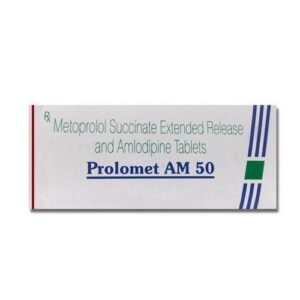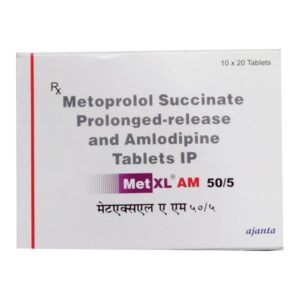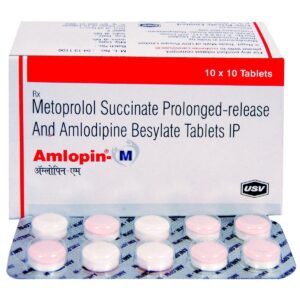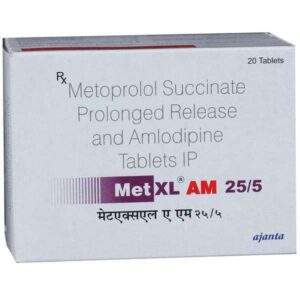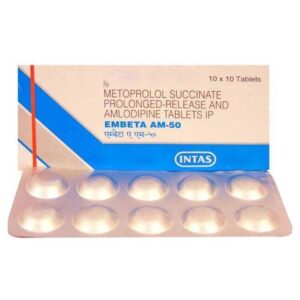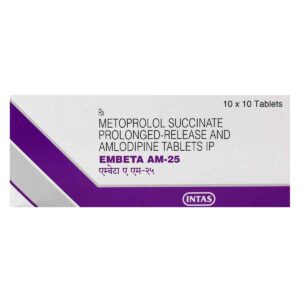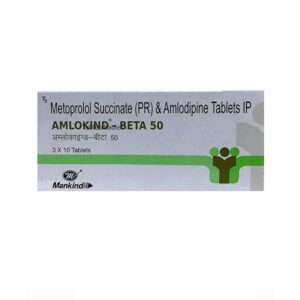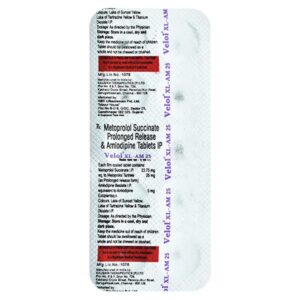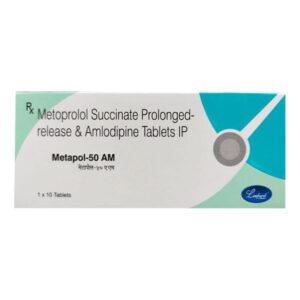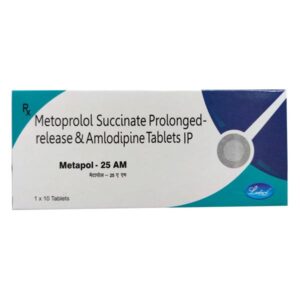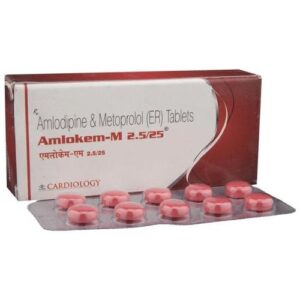AMLODIPINE + METOPROLOL
Amlodipine: Amlodipine is a prescription medication primarily used to treat high blood pressure (hypertension) and chest pain (angina). It belongs to a class of drugs called calcium channel blockers.
Amlodipine works by relaxing and widening the blood vessels, allowing for smoother blood flow and reduced pressure on the heart. This helps to lower blood pressure and improve blood supply to the heart muscle, relieving chest pain. It does not provide immediate relief for acute angina attacks and should not be used for that purpose.
The usual starting dose of amlodipine for hypertension is 5mg once daily, which can be increased to a maximum of 10mg per day. For angina, the typical recommended dose is 5-10mg once daily. However, the exact dosage may vary based on individual factors such as age, severity of condition, and response to treatment. It is important to follow the dosage instructions provided by your healthcare provider.
As with any medication, amlodipine may cause side effects. Common side effects include:
– Swelling of the legs or ankles (peripheral edema)
– Flushing
– Headache
– Dizziness
– Fatigue
These side effects are usually mild and go away on their own. In rare cases, more serious side effects can occur, such as low blood pressure, irregular heartbeat, or allergic reactions. If any unusual or severe side effects occur, it is important to seek medical attention immediately.
Amlodipine may interact with other medications, so it is essential to inform your doctor or pharmacist about all the medications you are taking, including over-the-counter drugs and supplements.
Overall, amlodipine is an effective medication for managing high blood pressure and angina. However, it is crucial to take it as prescribed and follow up with your healthcare provider regularly to monitor its effectiveness and manage any potential side effects.
Metoprolol: Metoprolol is a commonly prescribed drug belonging to the class of medications known as beta-blockers. It is primarily used to treat high blood pressure (hypertension), angina (chest pain), certain heart rhythm disorders, and to prevent heart attacks.
The mechanism of action of metoprolol involves blocking the effects of adrenaline (epinephrine) on the beta receptors in the heart and blood vessels. This results in a decrease in heart rate, blood pressure, and the workload of the heart, which helps to reduce the symptoms associated with cardiovascular conditions.
Metoprolol is available in various forms, including immediate-release tablets, extended-release tablets, and an injectable form. The dosing regimen for metoprolol will vary depending on the condition being treated and the formulation used. It is essential to follow the directions provided by your healthcare provider or follow the instructions on the prescription label.
Commonly recommended doses for immediate-release tablets are usually in the range of 25-100 mg, taken once or twice daily. Extended-release tablets are typically dosed at higher strengths, ranging from 25-200 mg, taken once daily.
As with any medication, metoprolol is associated with certain side effects. The most common side effects include fatigue, dizziness, low blood pressure, slow heart rate, nausea, and headache. Some people may experience more serious side effects, such as difficulty breathing, fainting, worsening heart failure symptoms, and allergic reactions, which require immediate medical attention.
It is important to note that metoprolol should not be abruptly stopped without consulting a healthcare professional, as it may lead to a rebound effect of increased heart rate and blood pressure.
Always consult with your healthcare provider for specific dosing instructions, potential drug interactions, and any concerns you may have regarding the use of metoprolol.

